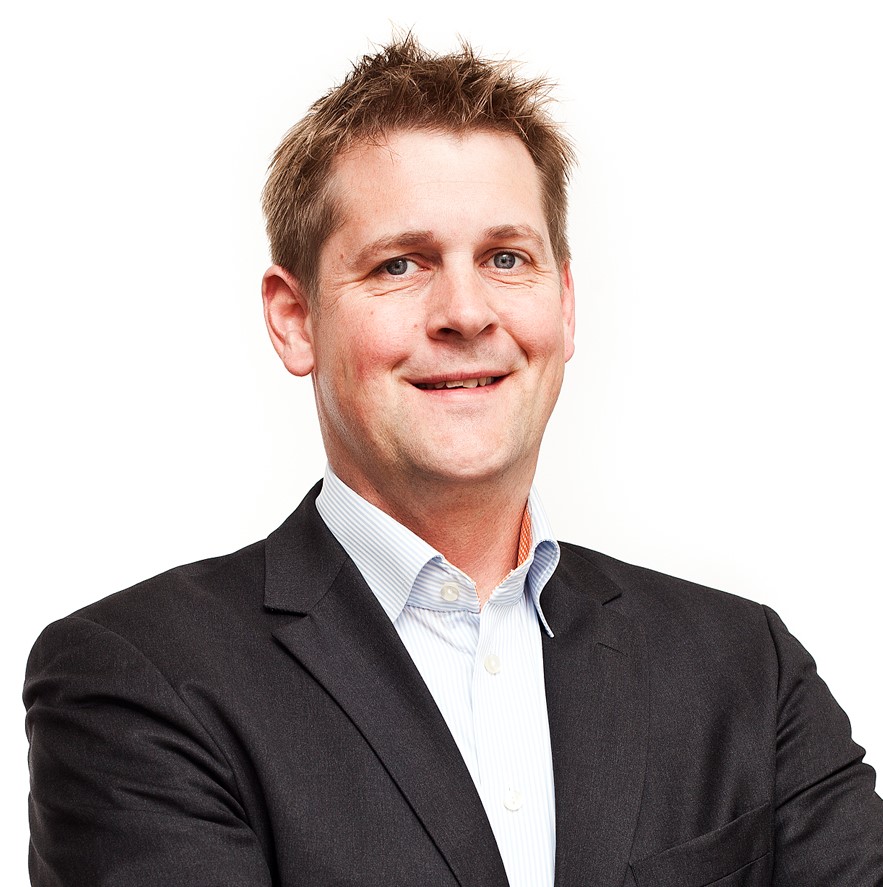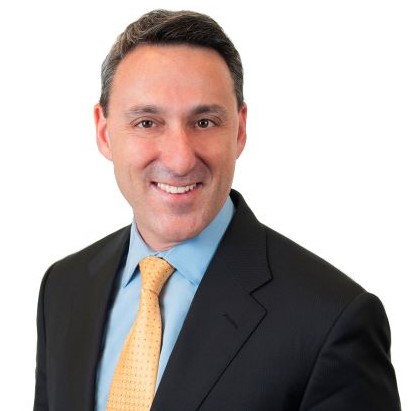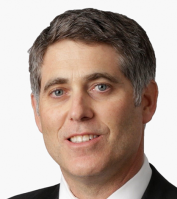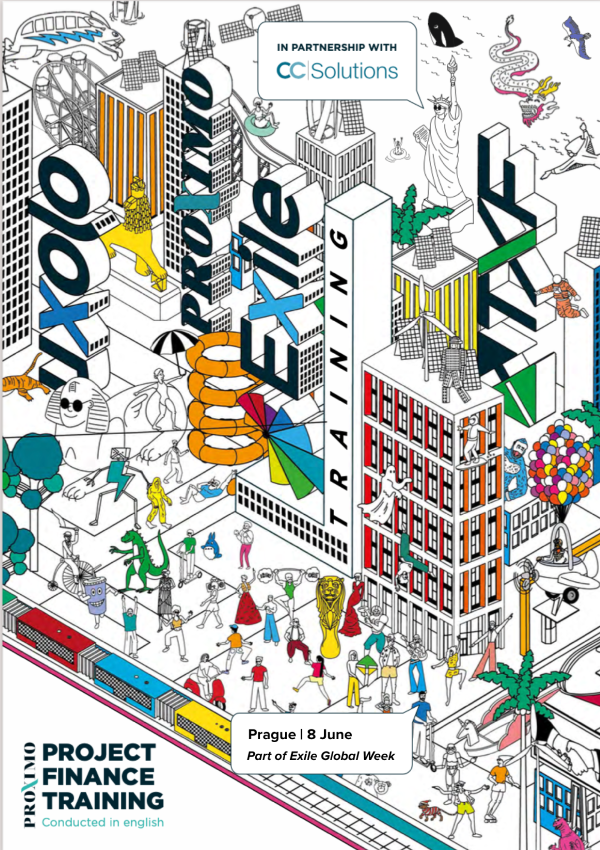Finding certainty in an uncertain climate (part one)
The new normal has accelerated many pre-Covid investment trends, slowed others and left many asset managers with an imbalance of risk in portfolios that were built on old risk perceptions. In the first session of a two-part roundtable sponsored by AXA XL, we explore the changing dynamics in the infrastructure investment market and a potentially bigger role for credit risk insurers in portfolio risk mitigation.

The old certainties attached to asset status in the infrastructure investment market have been rattled by Covid-19. Widely accepted perceptions of risk – core and non-core asset status – no longer necessarily apply to the same assets they did 10 months ago. For some infra asset managers, what were once balanced portfolios of diversified risk have been pushed out of kilter. And even for those largely unaffected by Covid fallout, risk mitigation and where to invest given an unprecedent macro backdrop is a challenge, especially given more competition for those asset classes that have proven fairly Covid-proof (renewables and communications for example).
It is a scenario in which credit risk insurance (CRI) providers are not only being asked for more capital efficiency solutions – cover for individual project financings and synthetic securitisations – but new products to mitigate portfolio risks for asset managers, tools that could easily be adapted for the infrastructure market.
With new portfolio risk mitigation techniques as high on the agenda as asset growth potential and the search for yield, Proximo and AXA XL brought together a panel of experts active in both infrastructure debt and equity to consider the challenges and solutions to getting infrastructure investment right in the new normal.
Panellists:

Michael Dyadyuk: Head of Financing Strategy (Americas) at Macquarie Infrastructure and Real Assets

David Giordano: Managing Director, Blackrock Alternative Investments

David Goldman: Chief Product Officer, Awbury

Oscar Prytz: Partner, LEAPX

Jeff Abramson: CFA, Head of Special Risks, Global Political Risk, Credit & Bond, AXA XL

Nick Cleary: Partner, Vantage Infrastructure

Andrew Kirby: Principal in Infrastructure Private Equity, Apollo Global
Proximo: Given the current energy and infrastructure investment landscape, what are the main drivers for infra investors?
Mike Dyadyuk: With the rewriting of the energy landscape in the US over the last decade, we have seen a high volume of energy infrastructure investment opportunities, especially for midstream energy infrastructure. While midstream and power has been part of our strategy, we have done so with an eye towards renewable energy. The continued evolution of renewable energy as an asset class, with the cost of production moving into parity in many cases with fossil fuels, has made this sector very popular – both from a sustainability standpoint and, now, also at a purely commercial level. These types of energy sources are highly regionalised, and the size and diversity of the regions are expected to create numerous opportunities for geothermal, wind and solar technologies. Beyond energy, we’ve seen certain infrastructure sectors outperform, telecommunications being the obvious one. So, we’ve looked for good opportunities to expand our existing telecoms footprint and add new assets, like our investments in data centres, fibre businesses and cell tower operators.
Proximo: Are you coming across new risks as you expand? For example, some people look at data centres as one set of risk, and others claim it is just real estate. Is there anything new risk-wise that you are coming across that requires a new form of mitigation?
Mike Dyadyuk: Each new investment we look at is a journey in terms of getting comfortable with the risk profile and proving out that it’s a fit within the infrastructure asset class – that holds true for data, but it was also true of our first waste investments many years ago which are now considered mainstream. It’s about looking at what the barriers to entry are in a given business; the competitive position of the asset; the key value drivers of the business and the keys risks, and ultimately is it infrastructure or something that is, in reality, beyond that mandate and therefore not something we should be spending time on.
Proximo: Renewables is also a sector that seems to be fairly Covid-proof. Do you foresee any new drivers in the market? For example, you've got US offshore coming up and the move to zero subsidy. Where do you see the finance coming from?
David Giordano: In some countries, the US in particular, I think zero subsidy will actually create some efficiency in the market. Investment and production tax credits are cumbersome and fraught with leakage, and as they disappear, while you can't fully replace their value just through efficiencies, I think the impact will be far less than initially might have been expected. There is more capital focused on renewables now than ever before and in the US, depending on what happens in the November election, I think we'll continue to see an orientation from the policy side towards renewables.
Given the amount of capital that exists and is focused on the space, the amount of capital that's orienting more towards ESG focused investments, and some of the risk people see in stranded assets for fossil fuel power generation into the medium and longer term, I think all that will just continue to benefit renewables. And whether it's on an equity or debt basis, you'll see a pretty healthy supply of capital available for renewables assets.
Proximo: And you don't think fallout from Covid-19 has affected the market in any major way? For example, merchant renewables, given power demand has dropped across the whole energy market.
David Giordano: You're hitting on the key point there – but we've already seen demand start to come back. I think you're just going to see a shifting of demand and maybe even more of a flattening of demand as you see a more flexible work environment.
You also have the impact of renewables on the grid. We're not quite in a place where renewable energy is setting the marginal electricity cost on a broad scale. But we have pockets where renewable energy is the marginal megawatt hour going into the system and that's providing a downward pressure on long term power prices. That's going to be the key risk to focus if you're thinking about building out a portfolio.
Proximo: Turning to Nick Cleary, how is the pandemic affecting Vantage Infrastructure in terms of business?
Nick Cleary: Covid-19 has generally been good for business in the short term, but we remain tentative about what this holds long term. The portfolio has performed well with no-defaults or any expected while we’ve experienced an improvement in quantity, quality and value in deal flow. That reflects the general market reaction, although more so in the US than in Europe where you've had more government support that has softened the volatility and widening of credit spreads. US capital markets have been volatile that means borrowers have come back to more stable and longer-term private investor groups like ourselves. In addition, credit spreads have widened accordingly and stayed wide relative to other markets. So we've seen what is probably the classic short term reaction. While the situation has started normalizing, we're yet to really see what the rest of this year and beyond looks like. But if the first three quarters of 2020 are an indication, infrastructure debt is looking like a winner out of Covid-19.
On the investors side of our business one of the things we're discussing a lot more, particularly with credit investors, is where do you find attractive and defensive cash yields if there's another huge wave of QE that keeps returns in public markets lower for longer? We think private infrastructure debt and equity remains a good place to put money in this environment.
Where you actually put money in response to the macro trends is quite interesting. Covid-19 is clearly a catalyst for some newer infrastructure sectors – data, telco and distributed generation/residential solar – however governments also have a large role to play to stimulate the economy and adapt to the future by putting capital to work in more traditional transport, utility and social infrastructure sectors. I'm skeptical that will happen in a widespread way in the US. In Europe, Australia and other places we see a clear federal approach and top down desire to invest in infrastructure alongside private capital. In the US the focus is likely to be less about the Federal government supporting infrastructure from the top down, but more about a bottom up reaction of local governments and agencies being compelled to act in partnership with the private sector to address critical and essential infrastructure gaps in capital, technical expertise and project delivery.
We are putting our client’s capital into sectors that weren't as available to us before – slightly more investment grade credit because competition has decreased or sectors like distributed generation and residential solar because of its resilience. But there are still a lot of traditional energy assets that are robust in this environment and the transitions of energy sources in the future that offer attractive value. For example, midstream infrastructure focused on gas can offer low risk and above market returns. So, it's not just about new opportunities but identifying and acting on pockets of exceptional value in more mature or less popular sectors as well.
Proximo: Is that the same for both debt and equity sides of the business?
Andrew Kirby: The pandemic has forced a lot of people to reassess their portfolios, and it has reinforced the importance of good portfolio construction. I think it's also made people reassess sectors that they thought were core infrastructure – airports are a good example of that, where in the past several years, investors have been bidding very competitively for airports on an almost kind of core basis. With Covid-19, traffic volumes have not reflected the level of resilience that one would expect in a core asset. Conversely, with web-based communications, even though it's a relatively new sector and until pre-Covid-19 seen as outside of core infrastructure, it has proven incredibly essential for people's day to day lives, for businesses to function, especially for people working from home.
We want to carefully build a portfolio that's diversified across different sectors. We see many interesting communications opportunities, especially with the shift in the market from 4G to 5G and that rollout. There's an incredible amount of investment required to create the infrastructure necessary to support that new environment.
Also, on the energy side, new ESG-friendly opportunities, like renewables and battery storage, distributed generation, are really interesting. In all of these sectors you can find good management teams and platforms and scale them up. That's really where we can get returns, by scaling up platforms and buying good, solid businesses backed by management teams that can grow the assets.
Proximo: Where are you seeing asset pricing going given you've got to keep your investors happy with their returns?
Andrew Kirby: I'll speak specifically to communications, where there have been a lot of new entrants, particularly in the US market, who were probably a little bit more on the cautious side three to five years ago. I think everyone's firmly of the view now that this is infrastructure and so there have been a number of recent auctions that have been very competitive, and you have seen pricing tightening. That means we have to be much more selective in terms of where we compete, because we prefer to avoid highly competitive auctions with a dozen other infra fund sponsors where we anticipate strong return compression. We want to be selective, look at slightly off the run opportunities where we can trade complexity for value. Maybe this means there's heavier lift in turning around or scaling up operations.
There's a bifurcation in the market between buying something very clean and getting effectively a fairly compressed return or buying something where there's a little bit more complexity. Active asset management is needed to generate those complexity-driven returns and I think there's still a number of those opportunities out there in the market. You just have to work a little bit harder to get to them.
Proximo: LEAP is in a fairly unique niche – an investor platform putting together fully funded solutions. Oscar, have you seen a change in the client base that's coming to you? And what sectors are looking good and not so good going forward?
Oscar Prytz: Our focus primarily is to work together with the private risk market to make the exposure's investable for our institutional investors – it doesn't necessarily have to be within specific sectors or even infrastructure. We primarily look to the credit cover extended and provided by the insurers, but generally we see the same trends that have been mentioned – increased challenges in oil and gas and a slightly decreasing focus on renewables. There has been a massive amount of different renewables initiatives and while investments have not stopped, many have been put on hold in anticipation how Covid will play out and affect energy pricing and underlying project calculations.
Proximo: Given what has already been discussed about the changes in market dynamics, are insurers being approached for new products for new infrastructure sectors? Will there be any change in their credit risk insurance customer base going forward? And if so, what kind of risks are new infra sectors looking to offset?
Jeff Abramson: We have seen some incremental near-term change, as you might expect, with people looking for protection both for new opportunities and where risks are expanding. For example, in data centres, a sector where we had not seen a lot of activity, we've been asked for a lot of transactional cover. But for the most part, we see the Covid environment accelerating broader trends that predate the pandemic – three trends in particular.
First, we have seen a great expansion of different public sector entities coming to the private insurance markets for cover. The most notable example of that recently is we just participated in a $2 billion dollar expansion of the IFC’s Managed Co-Lending Portfolio Program, supporting IFC’s lending to emerging market banks for on-lending for corporate or project purposes. That was in part a direct response to Covid.
The second trend we've seen, or continue to see, is a lot of focus on efficiency of capital. Our historic core customer base has been the major international commercial banks and we have seen them look to take advantage of our product, not necessarily just for discrete transactions (we do a lot of individual project financing and structured corporate financings), but now more frequently on a portfolio basis. And as a particular niche within the portfolio area we've now started to cover synthetic securitisations by banks for various portfolios, including things like project finance. For example, we just covered a renewable energy project finance portfolio for a bank where the insurance covers the mezzanine layer of a securitisation.
And lastly, some asset managers are becoming more aware of how they can take advantage of credit insurance in mitigating portfolio risks. Consequently, we've had some success in different types of fund structures – for example we recently facilitated a senior secured bank facility being utilised to capitalise a new fund for a leading commercial real estate fund manager. We have also supported lending into several private equity secondaries market transactions; so we're really seeing a dramatic expansion of enterprises seeking to take advantage of our products.
Proximo: David Goldman, I'm told you do more in the broader risk management sector. Have there been any changes for you in approaches from your customer base?
David Goldman: The key Covid-related thing that we've seen is a lot of de-risking by the banks – their risk management departments have applied tighter constraints on the business origination teams which has created a number of opportunities for us to insure risks that have been on a bank’s books for some time – exposures that banks were comfortable holding pre-pandemic, including strong investment grade names – where there are “tall tree” issues that need to be resolved.
The other thing that's been helpful for us is that in the current market environment, some banks are more constrained in terms of the amount of financing (really the amount of leverage) that they can provide. So that gives us an opportunity to provide junior/mezzanine level protection, not in infrastructure specifically, but across the board. We've had some reverse inquiry there that we probably wouldn't have seen six months ago.
Awbury is open to considering a broad range of risks – it's about finding the right partners, making sure there's appropriate alignment of interest and finding a reason for us to participate. We don't work on flow transactions, rather, we focus on bilateral, bespoke deals where the motivation for the purchase of protection is driven by more than just a desire to transfer an underlying risk. An example of this would be where traditional credit products, like, for instance, letters of credit, are more difficult for players to access, we've had the opportunity to provide insurance as an alternative form of collateral. These opportunities are not necessarily driven by the fact that the corporate clients have gotten riskier, but rather by the fact that there has been a pull-back in capacity for, shall we say, non-core clients. This dynamic applies broadly, including in the infrastructure space.
Lastly there are new and interesting restructuring opportunities. That doesn't necessarily mean that we're looking at distressed situations; it's more where the sectors have been broadly perceived to be risky or there are certain sources of capital or certain parts of the capital structure where there's a need to replace those pieces of the puzzle. That's where we've had the opportunity to come in and provide insurance, or in some cases funded, alternatives to what has traditionally been in the market.
Proximo: So you've been getting new business that you perhaps wouldn't have got before. But have you also found yourself taking more risky transactions, and has your current portfolio performed in line with expectations?
David Goldman: We pride ourselves on our structuring capabilities and putting a tremendous amount of effort in at the outset to make sure that we're attaching at the right risk layers, and selecting the right perils, and working with the right partners. Even with those efforts upfront, we've had to do some proactive risk management during this crisis, not in the infrastructure space particularly, but across the portfolio. And as a result of those efforts, the portfolio continues to perform very well. We're write about 30 to 40 transactions a year, which is not very many by insurance industry standards, but we are very selective and have a very targeted portfolio, which has served us well throughout.
Part two of this roundtable will follow next week






